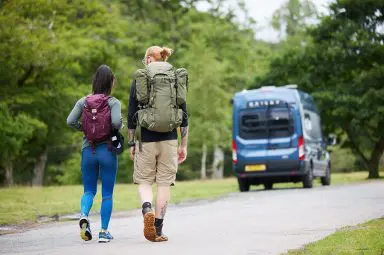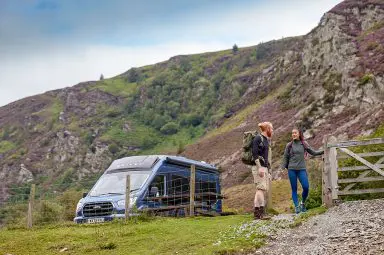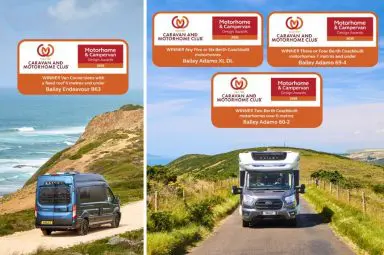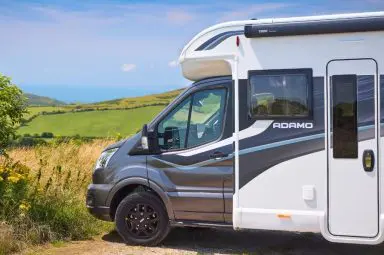Guide: What can my car tow (UK 2022)
You’re not alone. Many a soon-to-be caravanner has struggled with the same question, and even owners updating their vehicle may need some help with tow weight when making a new purchase.
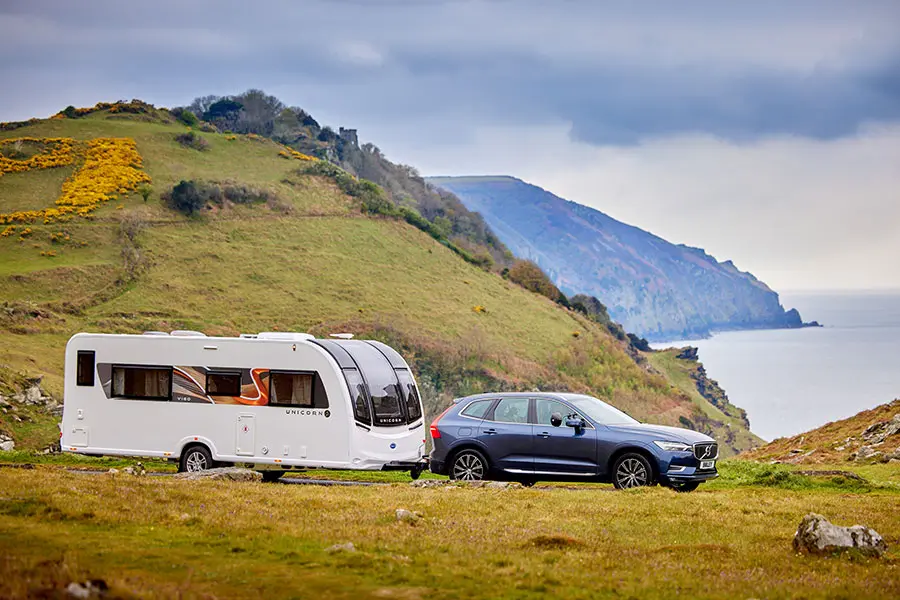
So how much can your car tow in the UK in 2022?
When you start looking at what your car can tow, several key things to consider add up to you finding the perfect car and caravan match.
These are the towing capacity of your car, the weight of the caravan that you want to tow, and the weight of the things you want to take with you (such as luggage and equipment).
You’ll also need to consider if the caravan is right for you and your family in terms of layout and the number of berths you require.
It may be that once you’ve considered all these things, you find the perfect caravan for you but find that your car isn’t a match for towing that caravan.
This is why it’s important to consider the whole package early on and make sure that everything will fit together before you make any changes or new purchases.
In this guide to towing article, we’ll help you make sense of all these things and how they fit together so you can find the right car and caravan combination for you if you ask the question ‘What can my car tow in 2022?’
In this guide we’ll cover:
- Your car and it’s towing capacity
- How much weight can I put in my caravan?
- How can I match my car to my caravan?
- What can I tow with my licence?
- Towing FAQs
Your car and its towing capacity
What does towing capacity mean?
Your car’s towing capacity is effectively a towing limit – the maximum weight your vehicle can safely and legally tow.
To stay within these limits, you need to ensure that the caravan you want to tow matches with your car. We’ll explain how this works as we go through this article.
How to find your car’s towing capacity
The towing capacity of your car can usually be found in your car owner’s manual, but if you no longer have the manual or have misplaced it, you can also find it on the VIN plate of your car which is often under the bonnet or in the door pillar of your car.
Alternatively, it can sometimes appear on the windscreen.
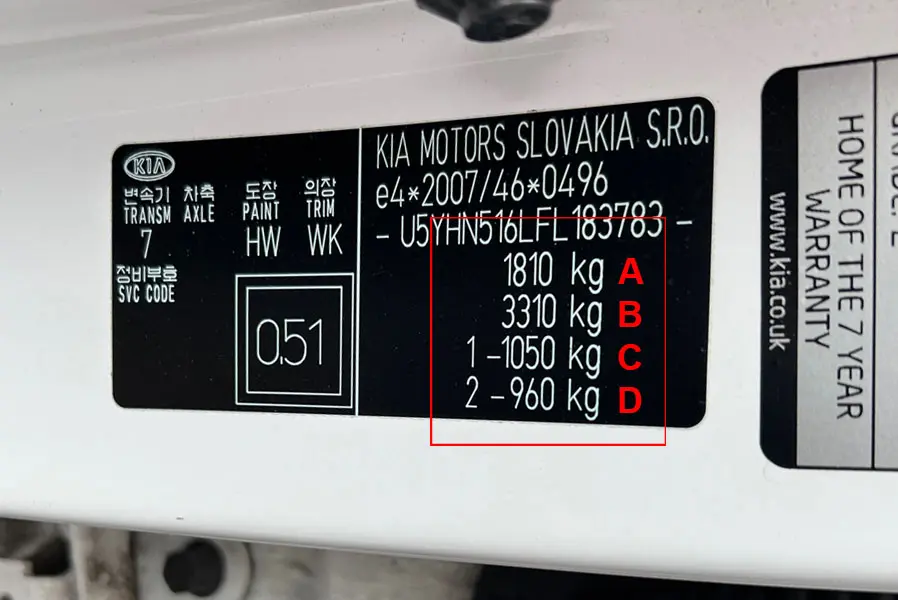
There will be 4 weights listed on your VIN plate (see image above). In order, these are:
- A – the gross vehicle weight
- B – the gross train weight
- C and D – the maximum axle loads for the front and rear axles respectively
To calculate the recommended maximum towing capacity for your vehicle, you need to subtract the gross vehicle weight (A) from the gross train weight (B).
The number you are left with will be the maximum weight your car can tow.
For example, this is the calculation for a Kia Cee’d ECO Dynamics 1.6:
- Gross Vehicle Weight: 1810kg
- Gross Train Weight: 3310kg
- 3310kg – 1810kg = 1500kg
So this car has a maximum towing capacity of 1500kg
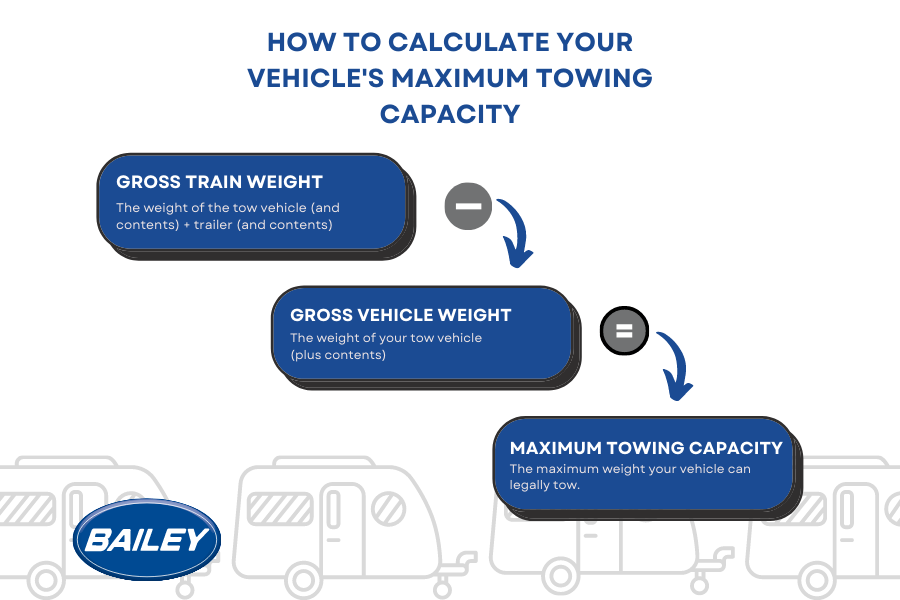
For safety, it is recommended that you should keep the fully laden weight of the caravan at no more than 85% of the kerbweight of the tow car, especially if you are new to towing.
To calculate this, you will need the kerbweight of the car (which can be found in the car owner’s manual) and the MTPLM of the caravan. If the MTPLM is 85% or less of the car’s kerbweight, then the caravan falls into this recommendation.
For our Kia C’eed above, the kerb weight is 1367kg. This makes 85% of the kerb weight 1161.95kg.
How much weight can I put in my caravan?
Once you know the towing capacity of your car, you’ll need to check that the caravan you want to tow will allow for the weight of the caravan and the weight of your kit and luggage.
For this you’ll need the MTPLM and the User Payload.
- The MTPLM is the Maximum Technically Permissible Laden Mass, which is the maximum weight a vehicle can be. This includes the User Payload, which is explained below. Sometimes the MTPLM is also known as the maximum authorised mass (MAM).
- The User Payload is the maximum additional weight that can be added to the caravan in personal possessions and any optional extras.
All caravans on the Bailey website and in our brochures have the MTPLM, and the User Payload displayed, but if you need to calculate the User Payload, you can do it like this:
- Find the MRO (or Mass in Running Order). This is the caravan’s weight as it leaves the factory in its standard form. You’ll also need the MTPLM.
- Subtract the MRO from the MTPLM
This will give you the User Payload, which is the amount of weight you can add to the caravan in terms of personal possessions and optional extras
As an example using the Discovery D2-2:
- MRO = 884kg
- MTPLM = 995kg
- 995kg (MTPLM) – 884kg (MRO) = 111kg (User Payload)
So 111kg is the amount of weight you can add to the caravan in terms of personal possessions and optional extras.
To load your caravan correctly, you should place the heaviest items low down over the axle, medium weight items as low down as you can, with the heaviest of them as close to the axle as possible, and the lightest items can then be stored higher up in lockers or wardrobes.
Be aware that the higher the weight, the more the caravan’s centre of gravity can be affected.
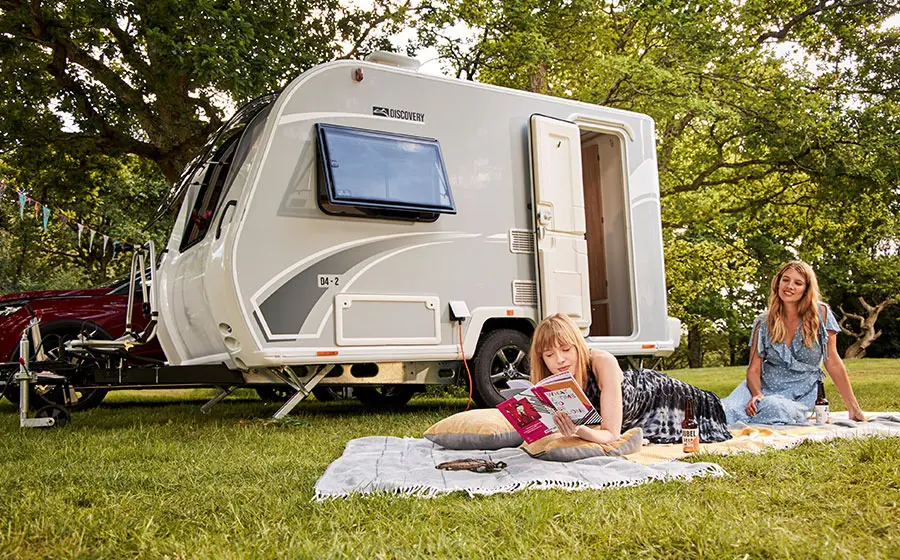
Read this article in our beginner’s section to find out more detail about loading your caravan correctly.
Once the caravan is loaded, you should also check the nose weight.
This is the downward force on the tow bar, and it’s important to check this to make sure you are safe when towing.
You can find information on this again in our beginner’s section here
Watch this video to see a demonstration from Bailey of Bristol and the University of Bath on how to load a caravan correctly:
How can I match my car to my caravan?
Once you know the weight of the caravan you want to tow, the payload you can put into it, and the towing capacity of your car, you can check to make sure the vehicle and trailer work together.
The easiest way to do this is to use a service like Towsafe, which can be accessed online.
For a small fee, you can enter the car you want to tow with or the caravan you want to tow and see what matches come back.
Alternatively, if you are a member of the Caravan and Motorhome Club or the Camping and Caravanning Club, you can also use their free tow matching services.
These are available to members as part of their membership packages and will allow you to match your existing car or one you are considering purchasing against different caravans.
See the links below for more information:
Caravan and Motorhome Club
Camping and Caravanning Club
For our Kia C’eed and Discovery D4-2, however, you can see the following:
- The Kia C’eed has a towing capacity of 1500kg, and the Discovery D4-2 has an MTPLM of 995kg. The Discovery D4-2 is under 1500kg, so the Kia C’eed can tow it.
- The Discovery D4-2 has a User Payload of 111kg, so this is the amount of personal possessions and optional extras you can add.
- The Kia C’eed has a kerb weight of 1367kg. 85% of this is 1161.95kg which means that the Discovery D4-2 is also less than 85% of the kerb weight of the Kia C’eed when fully laden, as its MTPLM is 995kg.
What can I tow with my licence?
On the 16th of December 2021, the rules around towing a trailer/caravan with a car changed. If you passed your test after 1st January 1997, you can now tow heavier caravans without having to pass an additional test.
Here are the new rules from the 16th of December 2021 for towing trailers or caravans:
If your driving licence was issued before 1st January 1997
If you passed your test before 1st January 1997, you can usually drive a larger choice of vehicle and trailer/caravan combinations weighing up to 8250kg MAM.
If your driving licence was issued on or after 1st January 1997
If you passed your test on or after 1st January 1997, you’re now allowed to drive a vehicle while towing a trailer or caravan up to 3500kg MAM
See the gov.uk website for more information
When starting to tow, here are some helpful tips:
- If you need to fit your car with a tow bar, there are many options for companies to do this for you – just take a look online
- Towing mirrors should be installed if the trailer is wider than the towing vehicle you intend to drive
- You must show the same number plate on your caravan or trailer as you do on your towing vehicle
- If you’ve never towed before, it’s good to practise first before taking a long trip, or consider getting some training
- When towing, the maximum speed is 60mph on motorways and dual carriageways and 50mph on single carriageways. See the gov website for more details
Towing FAQs
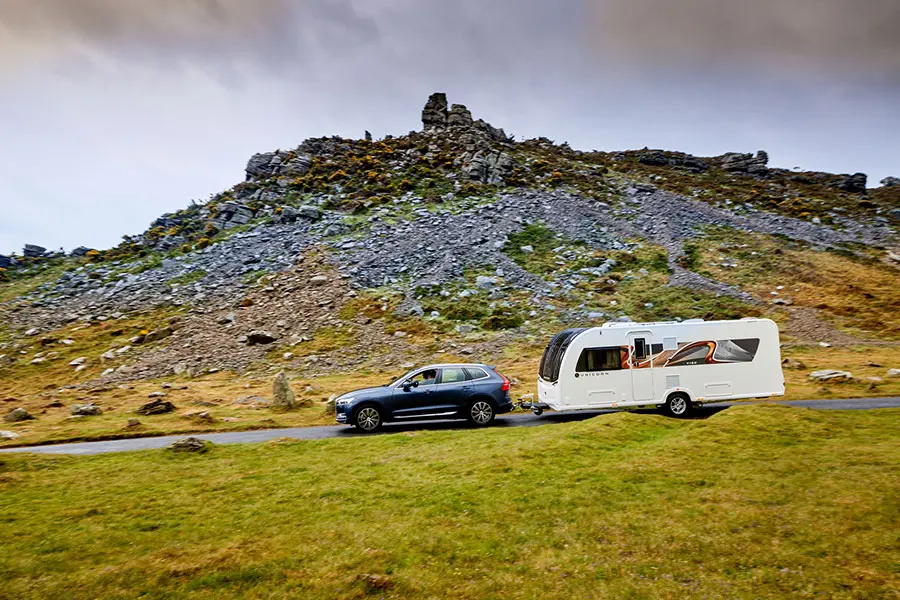
Do I need a special driving qualification to tow?
To tow trailers such as caravans, provided you stick to the rules of what you can tow depending on when you passed your driving test, there is no need to take any additional qualifications to tow a trailer or caravan.
However, towing can sometimes be tricky the first time, so if you feel unsure or would benefit from some extra guidance, there are courses available to help you.
You can book towing and confidence building courses with the Camping and Caravanning Club and the Caravan and Motorhome Club.
I’m new to towing – what weight should I begin with?
If you are new to towing, remember the general advice to keep the fully laden weight of the trailer or caravan under 85% of the kerb weight of the tow vehicle.
For your first few trips out, you might want to consider packing light and keeping trips closer to home to allow you to practise on shorter journeys.
As time goes on, you could consider purchasing a weight plate upgrade for your caravan if one is available for your model.
This will allow you to increase your payload and is especially handy if you are considering adding heavier accessories like a motor mover or a solar panel.
Weight plate upgrades are a paperwork exercise, so there are no modifications needed to be made to the caravan.
For safety, it’s still advised that you keep the fully laden weight of the trailer or caravan below 85% of the kerb weight of the tow vehicle after a weight plate upgrade.
You can read a blog post about weight plate upgrades here.
Will the type of holiday I want to take allow me to tow a caravan?
People use caravans for many holidays and weekends away, from a couple taking a short weekend break, to a family of five or more going on holiday for two weeks, complete with luggage, toys, bikes and equipment.
Everyone will find that their circumstances are different. Therefore it’s important to choose the right tow car and a caravan with a layout and MTPLM that will allow you to accommodate your whole family and everything they need.
Bailey caravans range from our lightest Discovery caravans which begin with the 2 berth Discovery D4-2, which has an MTPLM of 995kg and is excellent for couples who want something lightweight and easy to tow.
Our range goes up to the twin axle Alicanto Grande Porto, a 4 berth 8ft wide caravan with an MTPLM of 1847kg – so great for those who need extra space and capacity for equipment and luggage.
Can I tow with an automatic car?
You can use an automatic car as your tow vehicle.
It all comes down to personal preference and making sure that the automatic that you choose can be matched to the caravan that you want to tow with it.
One of the benefits of automatics is that they make driving easier and more comfortable as you don’t have to worry about the clutch pedal.
This can also benefit you when manoeuvring on a campsite, as again, there’s no need to use the clutch.
The Camping and Caravanning Club have a helpful data sheet on choosing between manual and automatic transmissions.
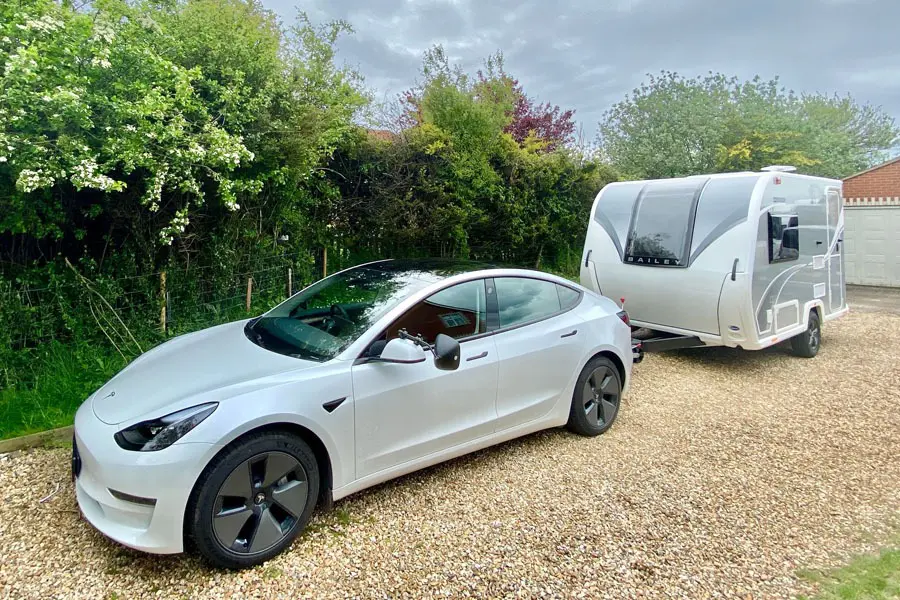
Can I tow with an electric car?
It is possible to tow with an electric car.
With the deadline for the ban on the sale of new petrol and diesel cars recently reduced to 2030, this is likely to become more common in the coming years.
At the moment, it is still early days for towing with an electric car, but it’s something that more people are trying to see how it works for them.
You can read our caravan ambassador Lee Davey’s report on his experience towing a Discovery D4-2 with a Tesla Model 3 as the tow vehicle in June 2021 here.
Latest news & events
See all news & eventsSwindon, Oxford and Reading Caravan and Motorhome Centre Easter Sales Event
GREATFIELD, ROYAL WOOTTON BASSETT, WILTSHIRE
Grantham's Midlands Caravan & Motorhome Season Ready Show
SPITTLEGATE LEVEL
GRANTHAM
